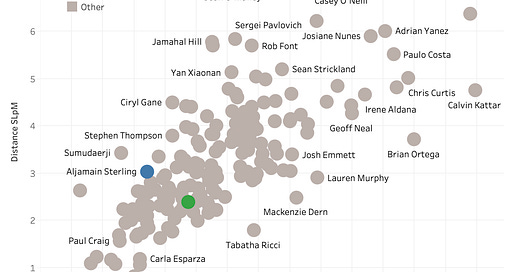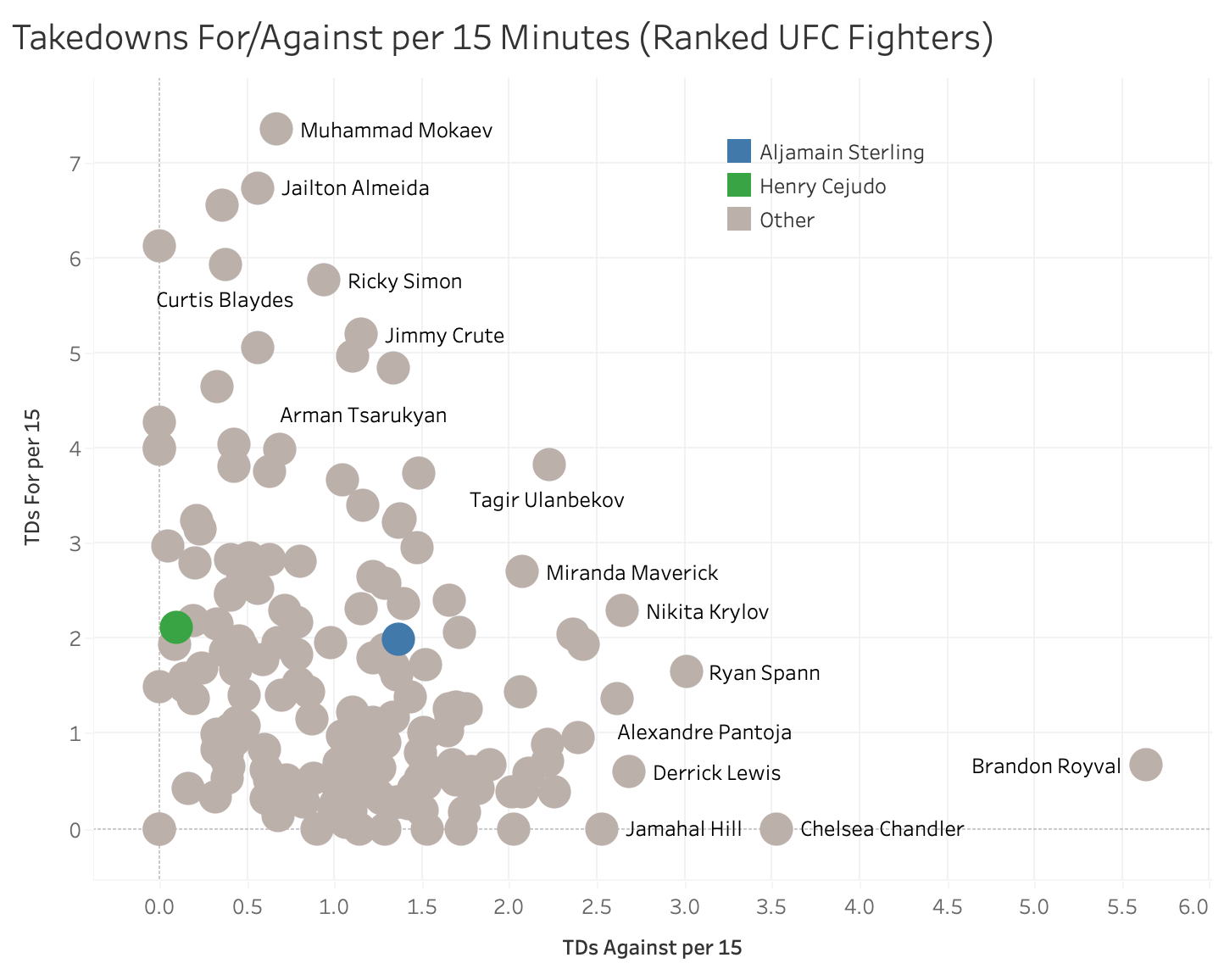Former UFC Champion Henry Cejudo Returns to Face Bantamweight King Aljamain Sterling: An Analysis of Grappling and Striking Elements in UFC 288 Main Event
Former champion Henry Cejudo returns from an extended layoff this weekend to challenge bantamweight champion Aljamain Sterling in the main event of UFC 288. Cejudo last fought in 2020 as he successfully defended the bantamweight title against Dominick Cruz at UFC 249. While he was technically retired during the interim period, he never strayed too far from the spotlight and a return always seemed imminent.
Part of the mystique around Cejudo is that he has experienced success in two weight classes. He won the flyweight title from Demetrious Johnson via controversial decision in 2018 and then moved up to bantamweight where he bested Marlon Moraes for the vacant 135-pound title.
Despite the mystique, he has fought at 135 pounds only three times in his UFC career: his debut against Dustin Kimura, the title victory over Moraes and his lone defense against Cruz. While several of his opponents have also competed at bantamweight, those fights took place at flyweight.
Sterling is by no means a small bantamweight. He has recently laid out his timeline to move up to featherweight. This might create some interesting challenges for Cejudo. Sterling will be the second tallest opponent of Cejudo UFC career (one inch shorter than Cruz), and he is matched with Kimura for the longest reach among Cejudo’s opponents.
Of course, it is the grappling elements of MMA that make size such an important factor, and that could easily be at play here. Sterling’s ability to control opponents is an essential element of his offensive attack. During his UFC career, he has averaged 1.98 takedowns per 15 minutes of fight time and spent 32% of his fight time in control positions.
While these numbers are impressive for Sterling, Cejudo is an Olympic gold medalist in wrestling and has displayed that grappling offensively and defensively in the Octagon. Cejudo has averaged 2.12 takedowns per 15 minutes, been taken down only once in 12 UFC fights and allowed his opponents to hold control positions for only 1.51% of his cage time.
Will that wrestling ability translate against an opponent the size of Sterling? That remains an open question. Cejudo did stop all seven takedowns he faced in his fights against Cruz, Moraes and Kimura. However, Sterling also has the ability to collect control time without finishing takedowns. For his UFC career, he has averaged a little over 35 seconds of control time per takedown attempt. In his recent title defense against Petr Yan, he went only two for 22 on his takedown attempts but still held control positions for 8:31 of the 25-minute fight (34%).
If Sterling is able to control the grappling portions of the fight, the contest swings heavily in his favor. Cejudo has improved dramatically as a striker over the course of his career. However, his striking differential (significant strikes landed per minute minus significant strikes absorbed per minute) is basically even when including only strikes at distance (standing and not the clinch). If the fight plays out at range, Sterling might have the advantage.
The main event of UFC 288 is certainly an intriguing matchup. While Cejudo has the mystique of success in multiple weight classes and an Olympic gold medal in wrestling, Sterling’s ability to control opponents with his grappling as well as his height and reach advantage could pose challenges for Cejudo.






